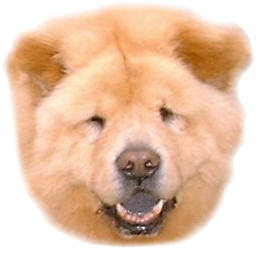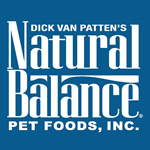
PLEASE
Donate
to Chow
Dog Rescue
All Donations are tax deductible


We Feed and Recommend
www.naturalbalanceinc.com

The
Chow Chow
Chow Chows range in size from 17 to 21 inches at the shoulder and weigh from 45 to 75 pounds. Chows are notable for their solid blue-black tongue. They come in two types: rough coats and smooth coated. The outer coats of rough coated Chows are abundant, dense, straight, and standing off. Smooth coated Chows are less popular and, therefore, rare. Coat color can be whole-colored black, red, blue (gray), cinnamon (fawn), or cream (white), frequently shaded but not in patches or parti-colored. The under-part of the tail and the back of the thighs are frequently of a light color. Chows should be brushed thoroughly once biweekly.
Chows shed heavily once a year or after a litter (these will not happen to any of our chows, as they are spayed or neutered) or surgery, due to anesthetic. They require regular, thorough brushing. Mats should be eased out or trimmed—not pulled.
The Chow makes an excellent house dog as it is quiet and dignified in the house, generally retiring to an out of the way place where he/she can keep watch. They are very easily housebroken. A Chow is rarely destructive of household furnishings. They are not diggers or barkers. When a Chow barks, it is wise to investigate. Chows are one-person or one-family dogs and are often wary of strangers. They are not outgoing, overly affectionate lapdog and are not for those who want a “loves everybody”, constantly-at-your-site type of dog. They are extremely intelligent, independent, and obstinate. Although they learn quickly, Chows are not always obedient.
Chows bond very early. They do well with older and considerate children. A Chow going to into a home with very small children for the first time may not be tolerant to children’s antics and should be supervised.
Chows do not tend to be “attack” biters and usually avoid encounters. However, they will often bite if cornered by a stranger or in a strange situation. This often happens during handling at animal shelters; and, because of this behavior is misunderstood, the Chows are destroyed.
Chows should be kept confined (fenced), partially due to their natural hunting instincts. They love to hunt “critters”; and, unless raised with cats, chows often mistake them as game. Chows also tend to be aggressive with dogs of the same gender. It is, therefore, not advisable to place an adult Chow in a home with dogs or cats of the same gender.
Moderate exercise is sufficient. Chows do not require a lot of exercise and adjust well to limited space like apartment living. In a yard, they will often pick one spot to “go”, and, if that area is kept picked up, that is where they will always “go”. They are extremely clean.
Chows often have bad reactions to anesthetics and die. Many veterinarians are not aware that only half the normal amount of anesthetic is sufficient for a chow.
Some Chows breathe heavily due to an excess amount of skin at the back of the mouth/throat (an elongated or soft palate). These dogs stress easier during heat, exercise, and excitement. The excess panting can put stress on their hearts. Water and protection from the weather should be available to them at all times—shade in the summer and shelter in the winter. During summer, it is best to keep Chows inside under air conditioning if the weather is very hot.
Chows sometimes suffer from entropion (malformation of the eyelids causing the eyelashes to rub on the cornea of the eye). If the eyes tear, a veterinarian should check them. If washing and medication do not improve the problem, they may need surgery to prevent blindness. Hip dysplasia (an abnormality of the ball and socket joint at the hip) occurs in 30 to 40 percent of Chows. Chows are very tolerant of pain and may not even limp but, in severe cases, may hesitate getting up from lying down, getting in and out of cars, or climbing stairs, and may be sensitive in the hip area. Only a qualified radiologist can determine for certain. Skin problems can occur from fleas, hot spots, allergies, soap rinsed out of the coat well enough, or hypothyroidism or other hormone problems.
Chows generally live to be 13 to 14 years of age.
